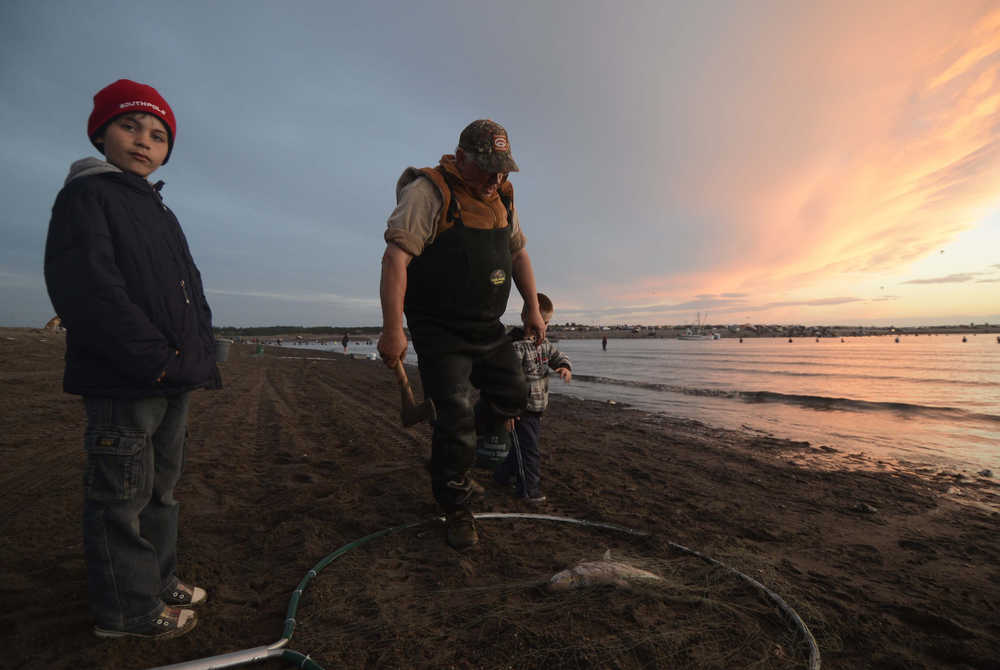Cook Inlet personal use fisheries have seen continual growth and 2014 was no exception.
Some 35,989 people applied for personal use fishing permits, an all-time high according to Alaska Department of Fish and Game harvest and effort estimates.
Using data from returned permits, Fish and Game estimates that more than 534,000 salmon were caught in the personal use fisheries on the Kenai and Kasilof Rivers and in Fish Creek.
The vast majority of those fish were caught in the Kenai River where the personal use salmon dipnetting season runs for the least 22 days of July. More than 404,000 fish were caught in that fishery. It also saw the highest amount of effort, with an average of 1,653 permits fished per day.
The second highest area of angler effort was on the 44-day Kasilof River dipnet fishery, where an average of 232 permits were fished per day. In that fishery anglers caught 94,230 salmon, according to Fish and Game data.
Sockeye salmon are by far the most often caught and harvested in personal use fisheries, though all five species of pacific salmon that return to the Cook Inlet are caught. Personal use fishermen reported more than 496,000 sockeye to Fish and Game as harvested in 2014.
There is no cap on the total number of fish that can be harvested in Cook Inlet personal use fisheries, though permit holders are limited to 25 salmon with an additional 10 salmon for each household member.
“There is no rule of thumb about how many fish are going to be harvested in the personal use fishery,” said Fish and Game Area Management Biologist Robert Begich. “It’s abundance-based… harvest is going to vary by the amount of fish that return.”
Because Fish and Game does not allocate a certain number of salmon into the personal use fishery, researchers can’t factor a projected harvest number in pre-season, Begich said.
On the Kenai River, managers estimate personal use sockeye harvest inseason. Fish and Game Research Project Leader Mark Willette wrote in an email that researchers use a 5-year average harvest rate in the personal use fishery. Inseason, the harvest rates are applied to daily sonar counts on both the Kenai and Kasilof Rivers to allow managers to track the run.
Reach Rashah McChesney at rashah.mcchesney@peninsulaclarion.com or follow her on Twitter @litmuslens

